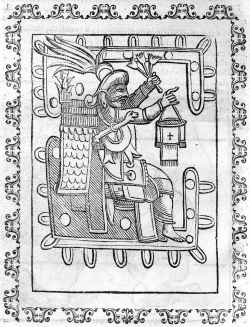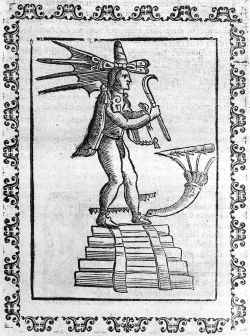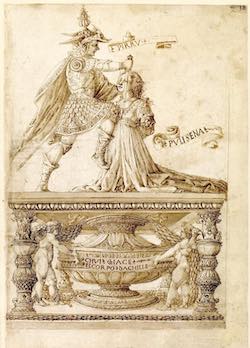Topic: 2. Sacrifice and religion: Comparisons, Antiquarians, Anthropology (16th-18th Century)
Religious sacrifices across various cultures and contexts sparked widespread interest in Early Modern Europe. As Christianity expanded into regions inhabited by "infidels" and "pagans", Europeans encountered a diverse array of sacrificial customs, ranging from the Sati rituals in India to the Aztec sacrifices in the Americas. This cross-cultural exposure captivated a wide audience, including theologians, philosophers, political thinkers, antiquarians, orientalists, missionaries, poets, artists, and even the general public. These encounters broadened the European understanding of sacrifice and led to a critical reassessment of classical and biblical sacrificial rites. This section includes:
- Sources: A selection of early modern printed materials, which include descriptions of the Americas, Asia, and Africa, alongside antiquarian and philological studies on religious sacrifice in classical antiquity and beyond. It also presents early modern works of ethnological observations and the first attempts to compare different sacrificial practices in various traditions and contexts, laying the groundwork for disciplines like the history of religions and anthropology.
- Iconographic Representations: A rich collection of images from the 16th to 18th centuries, illustrating a range of sacrificial rituals and practices as seen in different cultural and geographical contexts.
- Related Bibliography: An extensive bibliography spanning scholarly works from the 19th to 21st centuries, providing contemporary analyses and interpretations of these early studies and observations.
The Tropics of Heroic Death: Martyrdom and the Sikh Tradition
in: Martyrdom, Self-Sacrifice, and Self-Immolation: Religious Perspectives on Suicide, pp. 205–225
Oxford: Oxford University Press, 2018.
Prints Crossing Genres: Sixteenth-Century Iconographies of Old World Martyrdom and New World Sacrifice
in: Sacrifice and Conversion in the Early Modern Atlantic, pp. 321-348
Florence: Harvard University Press- Villa I Tatti , 2022.
La lotta per il sacrificio
Roma: Bulzoni, 2013.
One yajña, Many Rituals. How the Brahmanical Ritual Practices Became the ‘Vedic Sacrifice’
in: Annali. Istituto Universitario Orientale Napoli, v. 76 (2016), issue : pp.166-198.
The Sacrifice of Others. South Asian Religious Practices in Early Modern European Vocabulary
in: Studi e Materiali di Storia delle Religioni, v. 82 (2016), issue 2: pp.607-628.
Vanificare il sacrificio. Una proposta metodologica a partire dall'India antica
in: Scienze dell'Antichità, v. 23 (2017), issue 3: pp.111-121.
Il rito inquieto. Storia dello yajña nell’India antica
Firenze: Società Editrice Fiorentina, 2018.
The suicide of Themistocles [1675 - 1700]
Palazzo Reale, Turin
Martyrdom Contracts
in: Journal of Conflict Resolution, v. 50 (2006), issue 6: pp.855-877.
Martyrdom Contracts
in: Journal of Conflict Resolution, v. 50 (2006), issue 6: pp.855-877.
The Cult of Martyrs
in: Journal of Conflict Resolution, v. 57 (2012), issue 5: pp.881-904.
The Cult of Martyrs
in: Journal of Conflict Resolution, v. 57 (2012), issue 5: pp.881-904.
Il dio Quetzalcoatl (1626)
from: V. Cartari - L. Pignoria, Seconda Novissima Editione Delle Imagini De Gli Dei Delli Antichi, 1626, p. 550
Quetzalcoatl
from: V. Cartari - L. Pignoria, Seconda Novissima Editione Delle Imagini De Gli Dei Delli Antichi, 1626, p. 557
Essai de reconstitution du sacrifice Molek
in: Journal asiatique, v. 248 (1960), issue : pp.167-187.
Emulating Abraham: the Fāṭimid al-Qā’im and the Umayyad ʿAbd al-Raḥmān III
in: Public violence in Islamic societies: power, discipline, and the construction of the public sphere, 7th-19th centuries CE, pp. 130-155
Edinburgh: Edinburgh University Press, 2009.
Sacrifice, circumcision and the ruler in the medieval Islamic West: the Ismaili-Fatimid legacy
in: Intellectual interactions in the Islamic world: the Ismaili thread, pp. 147-170
London: Tauris , 2019.
Die flambierte Frau: Sati in European Culture
in: Sati, the Blessing and the Curse: The Burning of Wives in India, pp. 35-50
Oxford: Oxford University Press, 1994.
The Sacrifice of Polyxena (ca 1470-1475)
from: The Florentine Picture-Chronicle' page from the album (recto of 1889,0527.58): Pyrrhus (Neoptolemos) sacrificing Polyxena on the tomb of his father Achilles
British Museum, London





